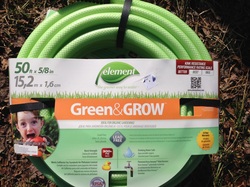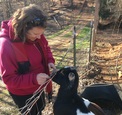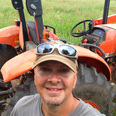|
This article originally appeared in the Courier-Tribune on June 7, 2020
I have lived in big cities most of my life. The constant traffic noise and streetlights are annoying. You never get to hear crickets or see stars. When I was in my late 30s, I moved to a semi-rural community in North Carolina. I say semi-rural because it was on a private road and had no streetlights, but it was only a mile and a half to the nearest mall. When we moved there, I immediately realized how little I missed big city noise. When I sat outside at night, the sounds of crickets, tree frogs and wind through the pines were so comforting. But the lack of streetlights was terrifying. I was sure that I heard Jason from Friday the 13th creeping around in the woods carrying 2 large axes and a machete. As soon as my imagination kicked in, I couldn’t hear frogs or crickets or anything else over the commotion made by all of the hairs standing up on the back of my neck, arms and legs. I told my wife that I was going to leave the outside lights on because of monsters. She grew up on a farm and loved the fact that we didn’t have streetlights, but she humored me. After a few months, I was finally able to sleep with the lights off.
3 Comments
 At Ozark Akerz, our health focused farming practices are focused on the entire farming life-cycle. People tend to focus on the reduction of herbicides and pesticides, but toxins lurk in the most unlikely of places. One example is water hoses. A lot of hoses contain lead and/or BPA. As the hose sits in the sun, the lead and other chemicals can leach out, not a cocktail you want to be watering fruits or vegetables with! To reduce this risk, we’ve adopted methods such as flushing our irrigation lines after watering and protecting them from the sun by burying them under mulch. We were also excited to find lead and phthalate (endocrine disruptors) free hoses, another step toward increasing the health value of our crops! One word of caution if you're planning on buying the lead and phthalate free Element hose, it kinks easily so you'll need patience to take another step towards a healthier garden! Even if you buy organic, be sure to find out what the general farming practices are of the farms you buy from. Although organic is better for you than conventionally raised food, if the farm does not take a holistic approach to farming you may still be exposed to toxins. Learn more about chemicals in organic food in this Mother Jones article. ...for our tomatoes that is! Bia's Gourmet Hardware Restaurant, located in Asheboro, NC, was one of our first customers. Owner and Chef Bia Rich was asked to be part of a cooking show and she used our tomatoes as part of her dish and mentioned Ozark Akerz as one of the local farms she sources ingredients from! We are honored to get the mention from her and are proud our focus on growing tomatoes with great flavor is getting the recognition it deserves! See what Chef Bia has to say about our tomatoes on Instagram* and Facebook or click here to view the cooking show and learn how to make homemade raviolli with shiitake mushrooms and cherry tomatoes in cream sauce. *You need to be logged into Instagram to view Bia is not alone in her opinion of our tomatoes, check out this YouTube video to see what some of our other customers are saying: |
Categories
All
Archives
April 2024
Check out our YouTube channel
Copyright © Turboxark Inc 2014-2024 - Terms of Use
|



 RSS Feed
RSS Feed